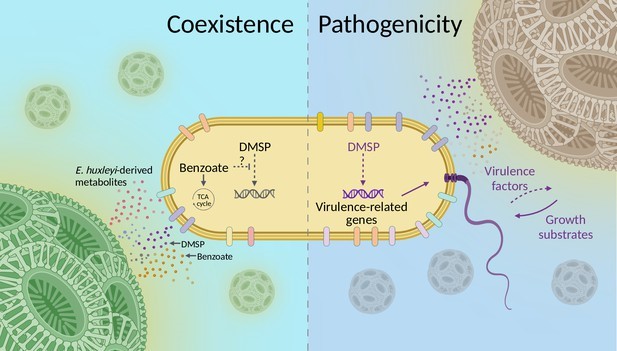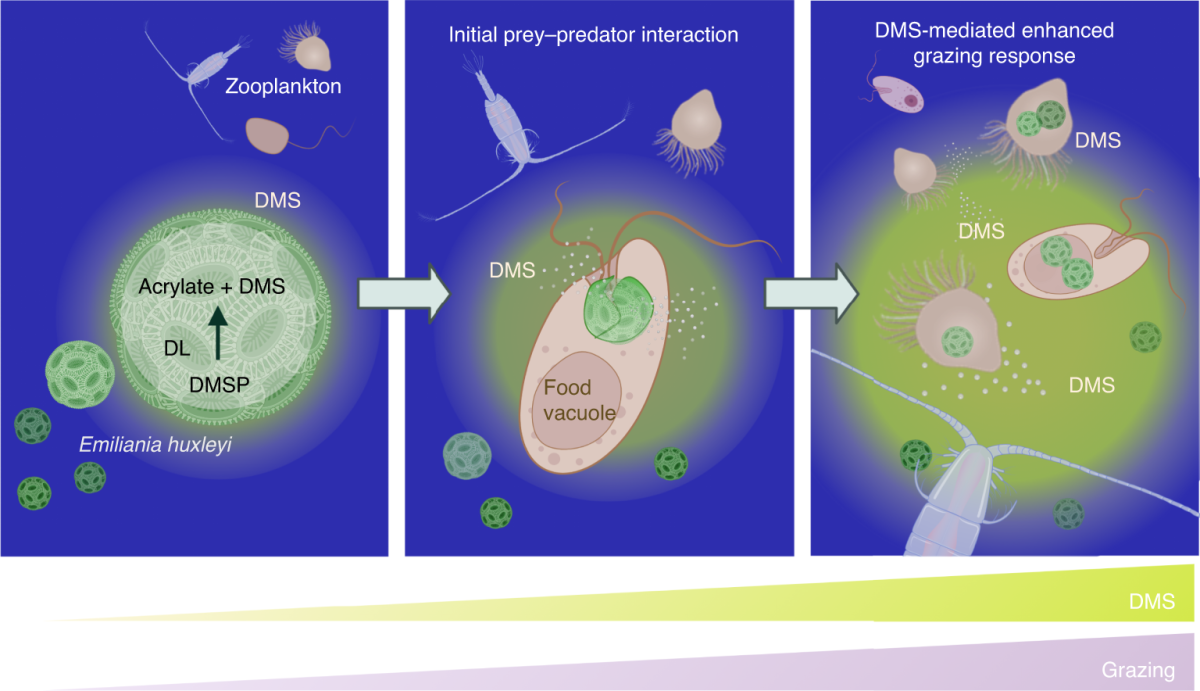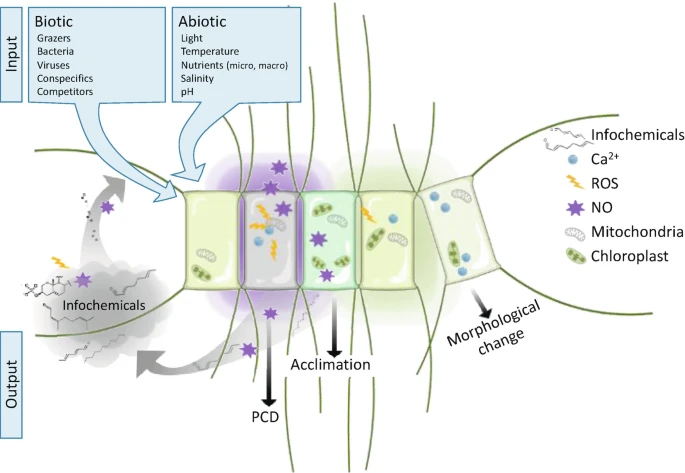Living within the chemo-physical gradient of light, nutrients and infochemicals, marine algae require cellular mechanisms to rapidly respond to these diverse signals. It only recently became apparent that phytoplankton utilize diverse cell signaling acclimation strategies to cope with biotic and abiotic environmental stress conditions. Still, very little is known about the molecular basis of those cellular mechanisms, leading to their ecological success. We seek to explore how microbial populations within algal blooms acclimate to their dynamic habitat and communicate via chemical signals.
Current research projects in the lab:
1) The virulence mechanisms employed by bacteria that play central role in algal bloom demise.

2) The signaling role of the metabolites DMS and DMSP during microbial interactions.

3) Cell fate regulation in diatoms: acclimation mechanisms versus programmed cell death (PCD) during interactions with diverse environmental stress conditions.

